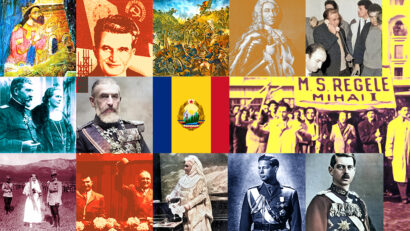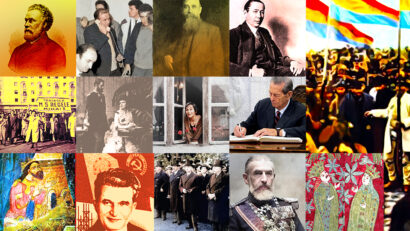The print media in Romania after WWII
The printed media suffered greatly at the hands of communist censorship

Steliu Lambru, 28.03.2022, 14:00
The printed media in the 20th century has
gone through a number of phases of development, from being independent to
censored or fully banned. The most serious cases infringing on freedom of the
media but also human rights, occurred over 1945-1989, during the communist
regime. After 1945, after having enjoyed the fresh air of freedom for a few
years after the censorship introduced by the fascist regime, the new communist
authorities reintroduced censorship with much harsher provisions. During this
time as well, however, there were those journalists that tried to do their job
as best as they could, based on the principles underlying media institutions.
Dorel Dorian worked as a journalist at the end of
WWII, and wrote for nearly all types of newspapers and magazines. In 1997, he
told the Center for Oral History about the importance of newspapers in his
parents’ house.
I was fascinated by the press long before I got to
learn this trade. Newspapers were sacred to my family and I. I had no idea how
they were written. My father had told me I shouldn’t believe what the
newspapers wrote, because, even though you learn to read between the lines, and
despite journalists’ best intentions, truth will out. It was a calling, the
written word was holy to me, I was confident I needed to look the word that
told the truth. I was young, It was a time of great spiritual upheaval,
although I made some mistakes, as I later discovered. It was an investment, a sacred
investment in some ideals that I deemed to be the ultimate purpose: social
justice, freedom and moral fiber, an acknowledgement of individual value. I
believed in all these things, I do even today, although for a long time the
path I chose turned out not the best right for me.
Young Dorian started writing at the age of 16, in
1945. Yet he soon noticed he was faced with choosing between his passion and
daily reality.
In the summer of ’48, a whole string of events made
he decided to study engineering. I doubted I could make a living out of
writing, and I had a family to take care of. I was also good at math, at
abstract things. So I enrolled at the Polytechnic Institute, the Energy
Faculty, and I graduated in ’53. I continued writing for the press all this
time. During the ’53 Festival in Bucharest, I was one of the most sought-after
journalists – I wrote stories, notes and reports. Right after graduation I
moved to Jiu Valley and was appointed head of the technical and electric
department at one of Romania’s first thermal power plants.
After the invasion of Hungary in 1956, Dorian noticed
a change in the media: from the revolutionary momentum after the war, the media
started to lose its voice, the Student
Life magazine being just an example.
I saw the media had started to turn dull. Many
articles were written as if commissioned, there was direct and obvious
political involvement. And we understood they were trying something else after
’56, because students started to react. I must admit this was short-lived.
After the second issue came out, there was a huge public scandal revolving the Student Life magazine. It was a serious
issue that was discussed in the Central Committee by Ceaușescu himself, in a meeting also attended by Leonte Răutu and Petre Gheorghe. We
were all called to say what we were after, what our life
plans were, how we ended up doing what we were doing, and if we considered
ourselves part of an Enlightened Movement.
Dorian therefore chose to switch to technical
journalism.
Ion Iliescu, who was now the secretary of the party’s
Central Committee, asked me what the authorities could do to appeal to the
young generations again, over which the regime was starting to lose its
influence. I told him very honestly that I was thinking about a magazine for
construction amateurs, something to give them a hobby. So this is how the Tehnium magazine came into being. After
three years of working for Science and
Technology and Tehnium, the magazines
were doing really well. The chairman of the Academy, Drăgănescu, asked me to
switch to a scientific magazine with a wider reach and a more professional
approach. At the time he was running the Free
Romania newspaper, which also had a magazine issue. I said yes. I also
contributed to other publications, such as the Woman magazine. I was called Dorina Petcu at the time, and would
take care of the fan mail. Our readers wanted to meet Dorina Petcu, but this
meeting was out of the question.
In 1989, the Romanian media underwent a new phase with
the changing times. It was a landmark that diversified the media landscape.
(VP)






























